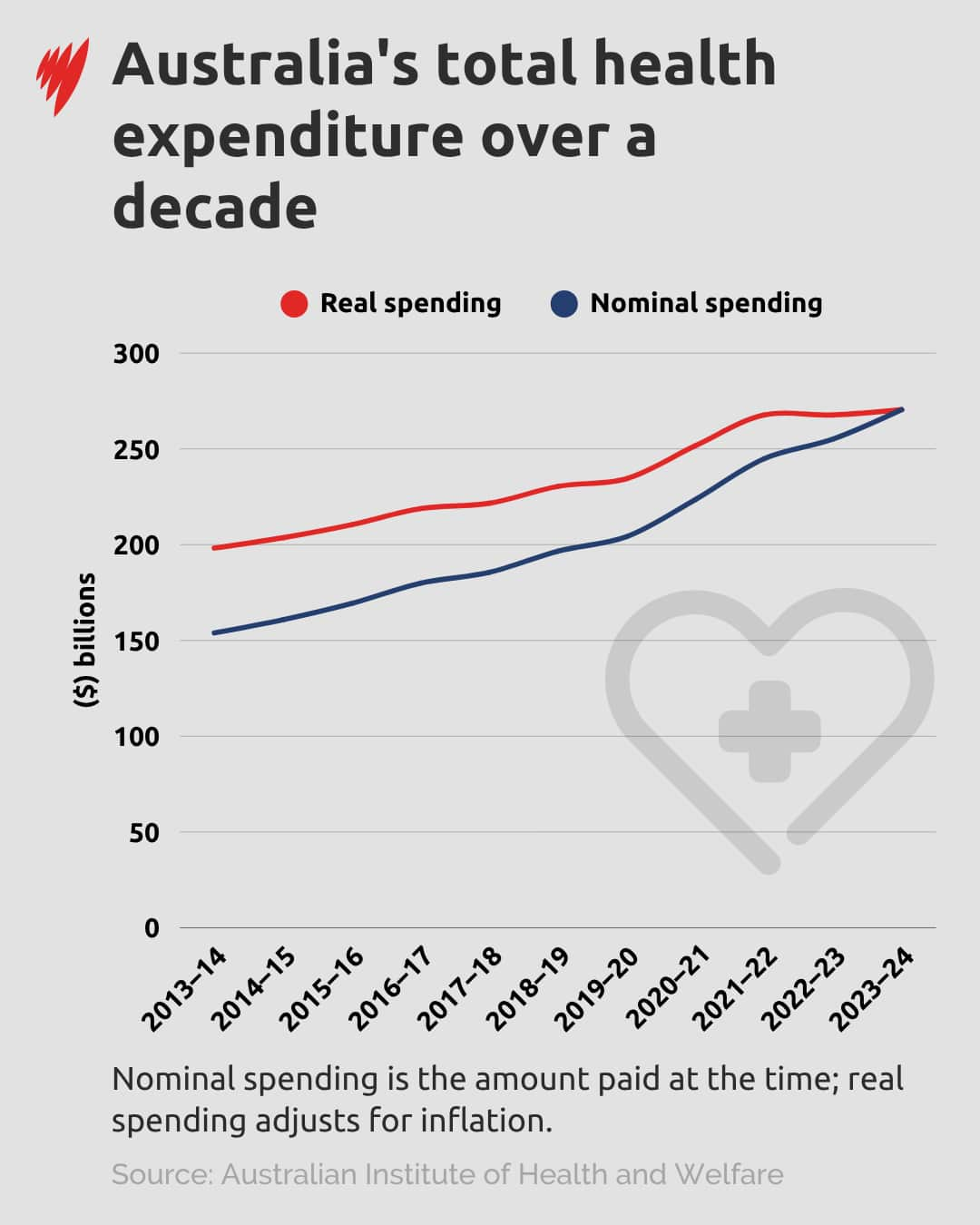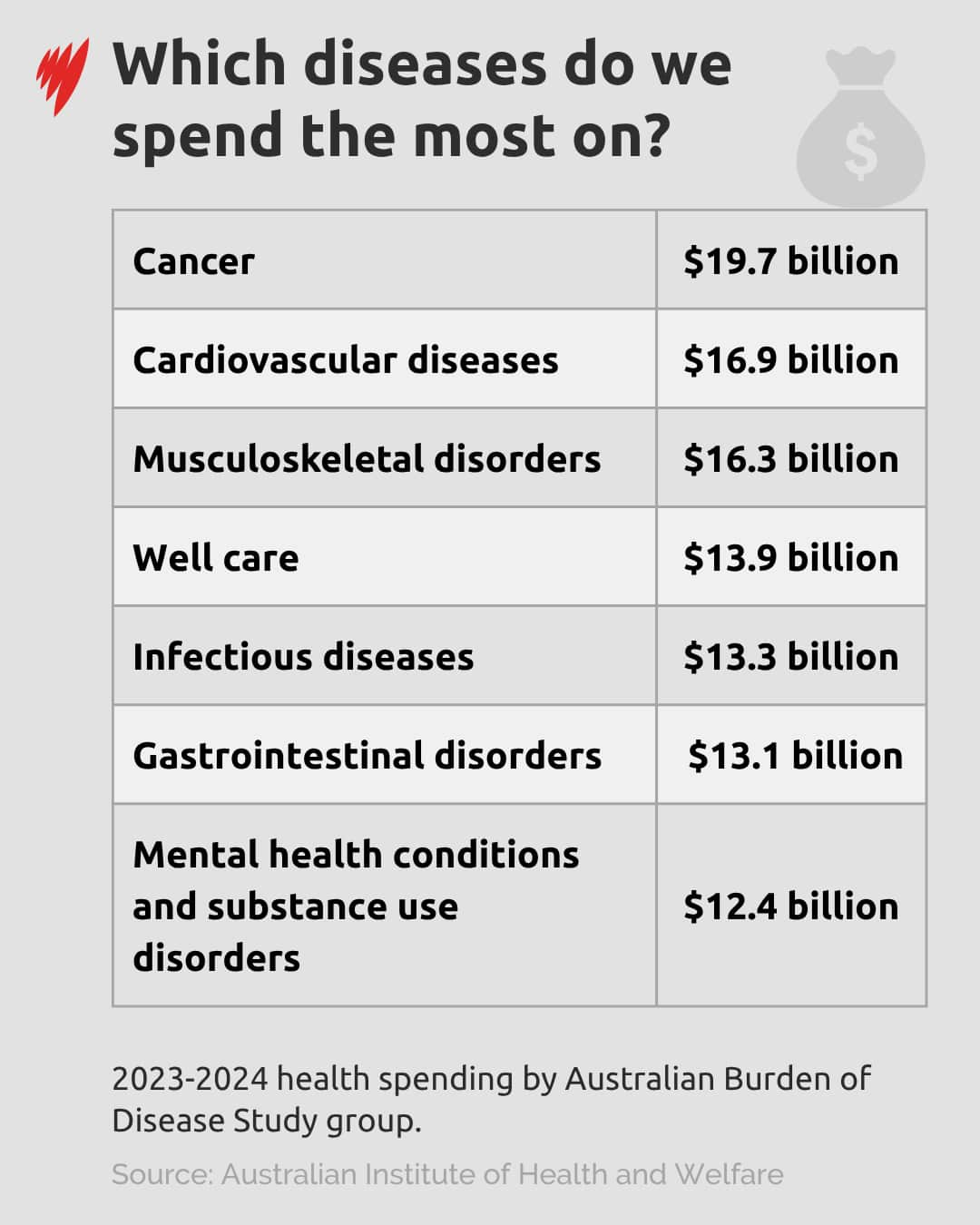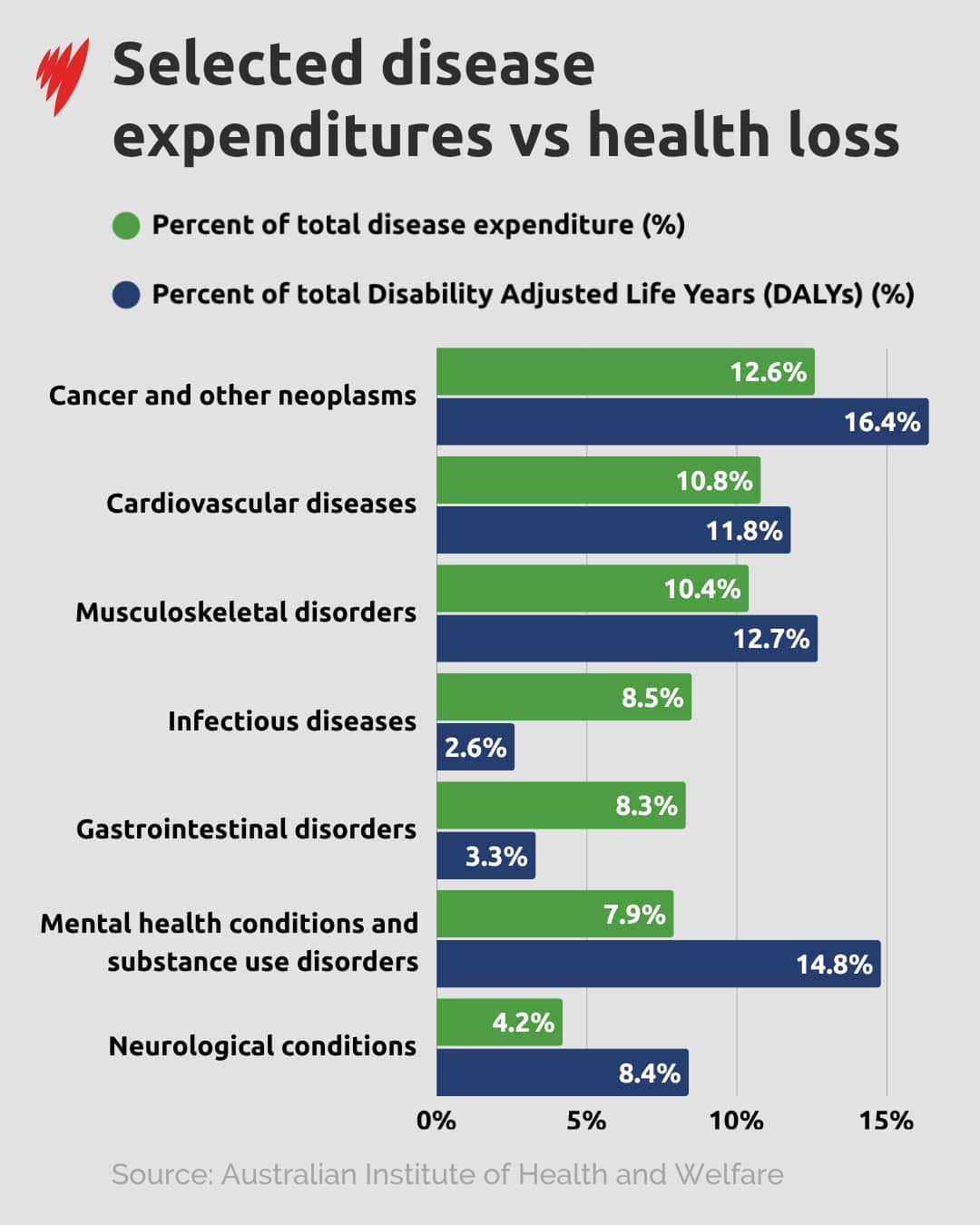Australia's real spending on health has increased slightly after a one-year plateau, while cancer remains the disease Australia spends the most on, newly released data shows.
The country's total health spend sat at $270.5 billion in 2023-24, according to Australian Institute of Health and Welfare (AIHW) reports released on Wednesday.
In nominal terms, it's an increase from $244.9 billion in 2021-22 and $255.1 billion in 2022-23, but when adjusted for inflation, the figure was $267.7 billion in both those periods.
Around 69 per cent of this was paid for by the government — $106.2 billion coming from Canberra and $82 billion from state and territory governments.
As a share of total government expenses, health spending decreased from 17.1 per cent in 2022-23 to 16.8 per cent in 2023-24, which "suggests health spending grew more slowly than other areas of government expenditure", the report reads.

In 2023–24, total health spending entered a post-pandemic period, totalling $270.5 billion, which equates to 10.1 per cent of the gross domestic product. Source: SBS News
The discrepancy between this figure and the nation's total health expenditure is due to $73.9 billion in costs such as administration and public health programs that can't be attributed to the treatment of any particular disease.
Which diseases do we spend the most on?
Cancer has remained the disease Australia spends the most on, a position it's held since 2017-2018. Spending on cancer has more than doubled since 2013-14 and now sits at $19.7 billion.
Among specific types of cancer, Australia spent the most on lung cancer and non-melanoma skin cancer ($1.87 billion each), bowel cancer ($1.85 billion) and breast cancer ($1.84 billion).
Cancer also had the highest burden, accounting for 16.4 per cent of the overall reduction in the total of disability adjusted life years caused by the 17 disease and injury categories.
Disability-adjusted life years, also known as health loss, is a metric calculated from the years of life people lose due to premature death or disability caused by illness or injury.

In 2023–24, cancer was the disease group with the highest spending ($19.7 billion), followed by cardiovascular diseases ($16.9 billion) and musculoskeletal disorders ($16.3 billion). Source: SBS News
Coronary heart disease ($3.8 billion), atrial fibrillation and flutter ($2.1 billion) and stroke ($2 billion) had the highest spending levels among cardiovascular diseases.
Among musculoskeletal disorders, osteoarthritis ($4.8 billion) and back pain and problems ($4 billion) attracted the most expenditure.
Cancer, cardiovascular diseases and musculoskeletal disorders have been the top three spending groups in all but one year since 2013-14.
Beyond that, the next most costly disease categories were well care ($13.9 billion) — encompassing things like routine dental work and pregnancy/postpartum care — infectious diseases ($13.3 billion), and gastrointestinal disorders ($13.1 billion).
Mental health conditions and substance use disorders ranked seventh in terms of overall spending, at $12.4 billion, but had the second-highest health loss, accounting for 14.8 per cent of the reduction in disability adjusted life years.
Common mental health conditions like depression and anxiety accounted for the most spending in this category — $2.7 billion and $2.6 billion, respectively — but per case, schizophrenia was the most expensive at roughly $29,000.
The AIHW report notes there can be many reasons why certain disease categories have steeply divergent costs and spending levels.

Cancer was the disease group with the highest disease burden in Australia in 2024, accounting for 16.4 per cent of total disability-adjusted life years. Source: SBS News
"Road transport injuries or smoking-related diseases, for example, may be also addressed by investments and responses outside the health system, such as through education, transport, environmental health or other social services."
The estimates in the recently released report are compiled from more than 50 data sources and capture spending by governments, individuals, private health insurers and other private sources.
They only include spending within the healthcare sector, but the AIHW notes that the costs of disease extend far beyond this into people's lives.
What's killing us?
The most recently updated AIHW data, covering 2023, shows Australia's leading underlying causes of death vary by sex.
Coronary heart disease was the biggest underlying killer of men, accounting for 10.8 per cent of deaths, while dementia was fatal to most women, accounting for around 12.2 per cent of deaths in that year.
In second place for both sexes, these underlying causes switch positions, accounting for between 6.4 per cent of male deaths and 7.6 per cent of female deaths.
In third place for men is lung cancer at 5.4 per cent, while for women it is cerebrovascular disease at 6.1 per cent.
Leading causes of death also varied by age, with land transport accidents the most common cause of death among children aged 1–14 and chronic diseases the leading cause among people aged 45 and over.
Share


